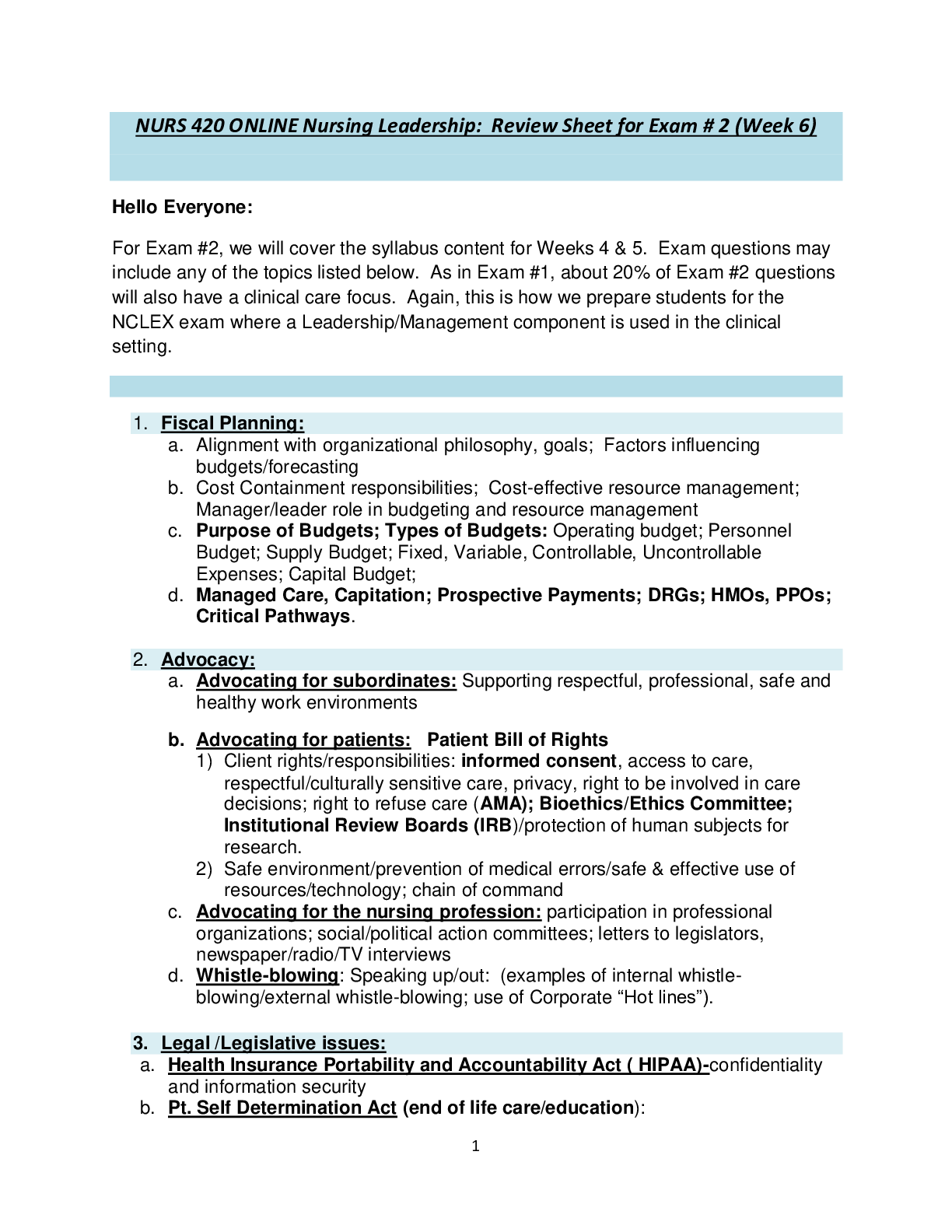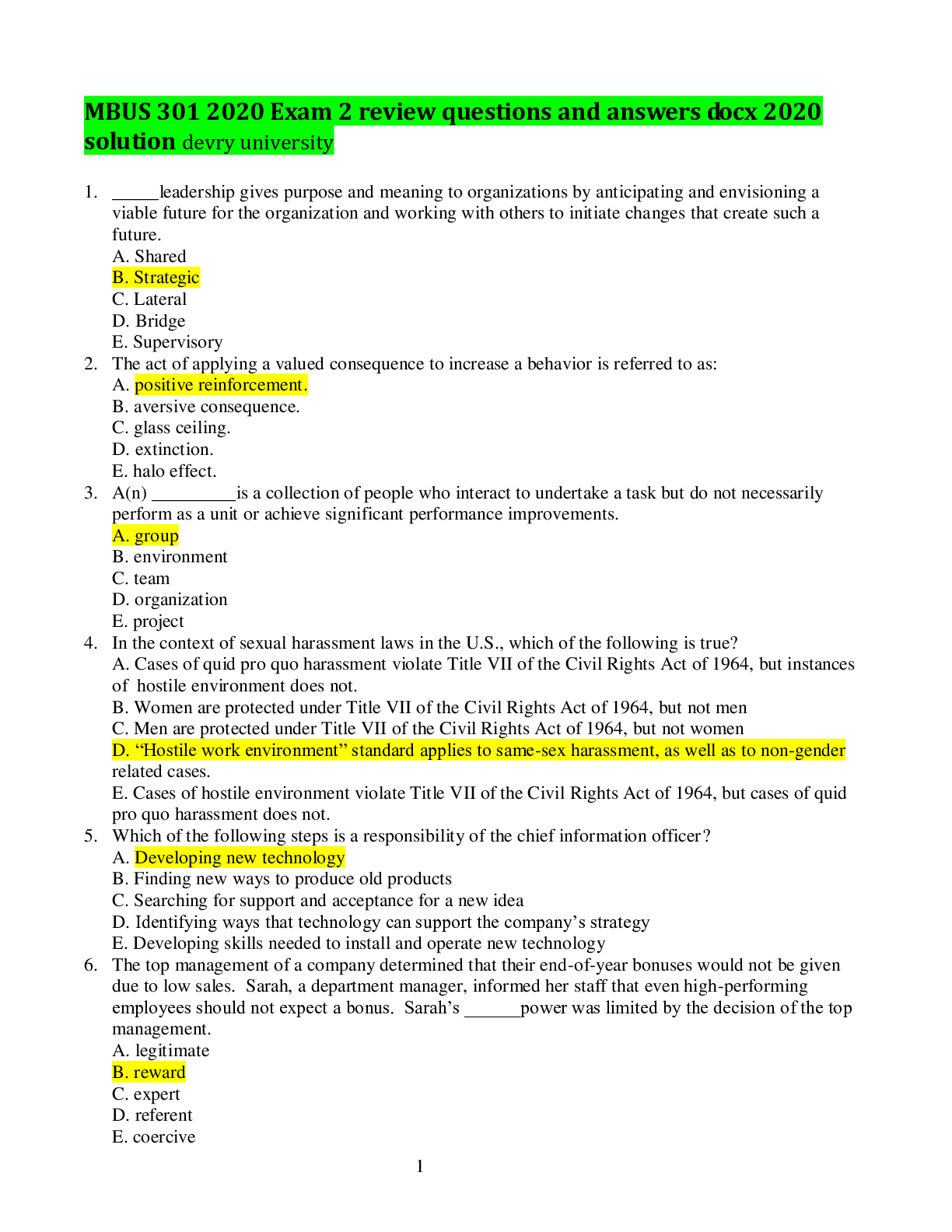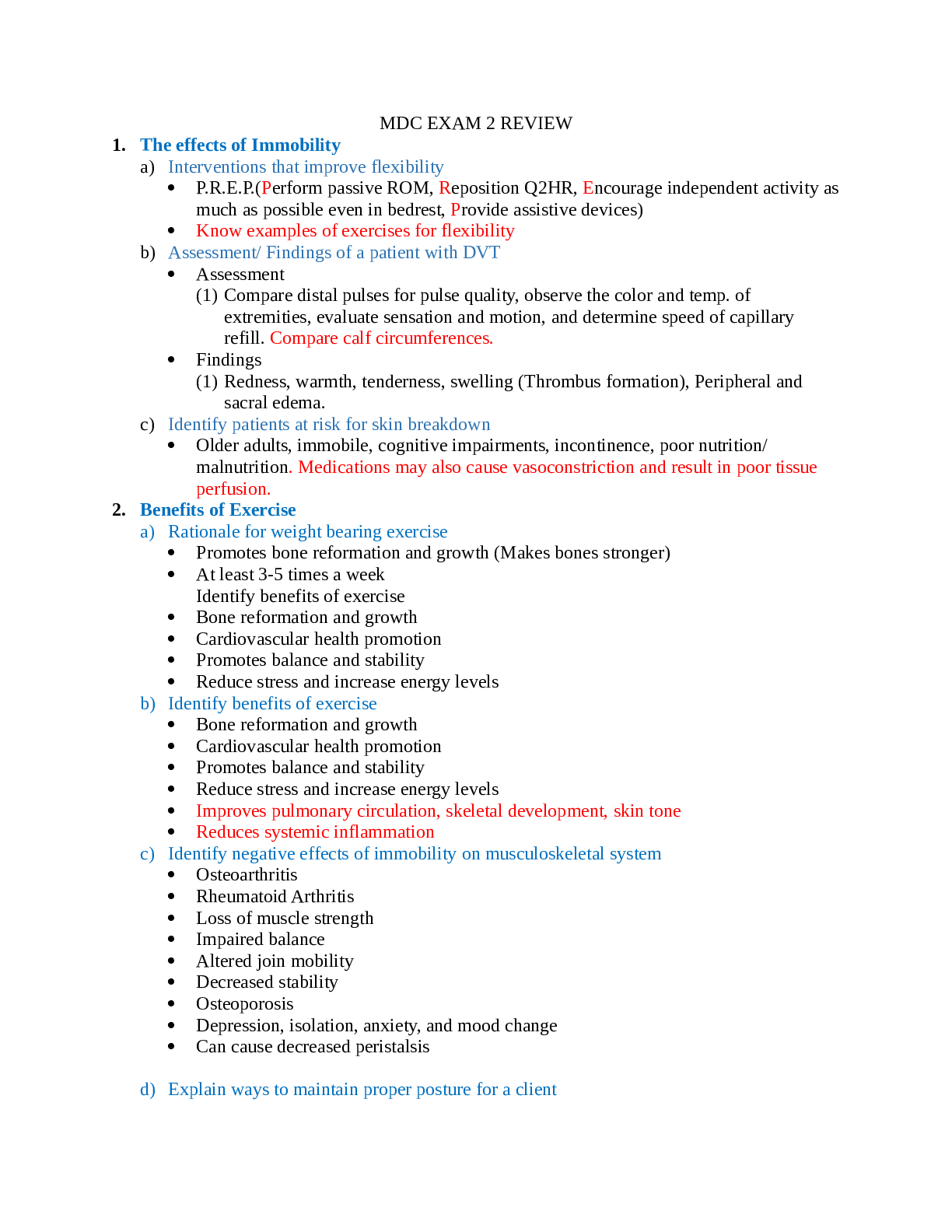*NURSING > STUDY GUIDE > (4b) NR327 Exam 2 Review Questions #4 (Normal Newborn - Processes of Adaptation (19), Assessment (All)
(4b) NR327 Exam 2 Review Questions #4 (Normal Newborn - Processes of Adaptation (19), Assessment
Document Content and Description Below
2. 1. A nursing student is helping the nursery nurse with morning vital signs. A baby born 10 hours ago via cesarean section is found to have moist lung sounds. Which is the best interpretation of t... his information? * Mark only one oval. a. This is an emergency situation. b. The neonate must have aspirated surfactant. c. If this baby was born vaginally, it could indicate a pneumothorax. d. The lungs of a baby delivered by cesarean section may sound moist for 24 hours after birth. 3. 2. Which organs are nonfunctional during fetal life? * Mark only one oval. a. Eyes and ears b. Lungs and liver c. Kidneys and adrenals d. Gastrointestinal system 4. 3. Which method of heat loss may occur if a newborn is placed on a cold scale or touched with cold hands? * Mark only one oval. a. Radiation b. Conduction c. Convection d. Evaporation 2/5/2019 (4b) ✅ NR327 Exam 2 Review Questions #4 (Normal Newborn: Processes of Adaptation (19), Assessment of the Normal Newborn (20), … https://docs.google.com/forms/d/1rGxxKa9XIeXXGnUdDabkOtaOteGii2gkX1f0TALwS7E/edit 2/13 5. 4. How can nurses prevent evaporative heat loss in the newborn? * Mark only one oval. a. Placing the baby away from the outside wall and the windows b. Keeping the baby out of drafts and away from air conditioners c. Drying the baby after birth and wrapping the baby in a dry blanket d. Warming the stethoscope and nurse's hands before touching the baby 6. 5. The nurse is explaining how a newly delivered baby initiates respirations. Which statement explains this process? * Mark only one oval. a. Drying off the infant b. Chemical, thermal, and mechanical factors c. An increase in the PO2 and a decrease in the PCO2 d. The continued functioning of the foramen ovale 7. 6. During fetal circulation the pressure is greatest in the: * Mark only one oval. a. left atrium. b. right atrium. c. hepatic system. d. pulmonary veins. 8. 7. Parents ask the nurse, "What makes the opening between the baby's atriums close at birth?" The nurse's response is that cardiovascular changes that cause the foramen ovale to close at birth are a direct result of: * Mark only one oval. a. changes in the hepatic blood flow. b. increased pressure in the left atrium. c. increased pressure in the right atrium. d. decreased blood flow to the left ventricle. 9. 8. The infant's heat loss immediately at birth is predominantly from: * Mark only one oval. a. radiation. b. conduction. c. convection. d. evaporation. 2/5/2019 (4b) ✅ NR327 Exam 2 Review Questions #4 (Normal Newborn: Processes of Adaptation (19), Assessment of the Normal Newborn (20), … https://docs.google.com/forms/d/1rGxxKa9XIeXXGnUdDabkOtaOteGii2gkX1f0TALwS7E/edit 3/13 10. 9. The nurse is explaining the risk of hypothermia in the newborn to a group of nursing students. Which should the nurse include as an explanation of hypothermia in the newborn? * Mark only one oval. a. Newborns shiver to generate heat. b. Newborns have decreased oxygen demands. c. Newborns have increased glucose demands. d. Newborns have a decreased metabolic rate. 11. 10. Which infant has the lowest risk of developing high levels of bilirubin? * Mark only one oval. a. The infant who developed a cephalohematoma b. The infant who was bruised during a difficult birth c. The infant who uses brown fat to maintain temperature d. The infant who is breastfed during the first hour of life 12. 11. The nurse is preparing to administer a vitamin K injection to the infant shortly after birth. Which is important to understand about vitamin K? * Mark only one oval. a. It is necessary for the production of platelets. b. It is important for the production of red blood cells. c. It is not initially synthesized because of a sterile bowel at birth. d. It is responsible for the breakdown of bilirubin and the prevention of jaundice. 13. 12. A meconium stool can be differentiated from a transitional stool in the newborn because the meconium stool is: * Mark only one oval. a. seen at 3 days of age. b. the residue of a milk curd. c. passed in the first 24 hours of life. d. lighter in color and looser in consistency. [Show More]
Last updated: 2 years ago
Preview 1 out of 13 pages

Buy this document to get the full access instantly
Instant Download Access after purchase
Buy NowInstant download
We Accept:

Reviews( 0 )
$11.50
Can't find what you want? Try our AI powered Search
Document information
Connected school, study & course
About the document
Uploaded On
Jun 08, 2021
Number of pages
13
Written in
Additional information
This document has been written for:
Uploaded
Jun 08, 2021
Downloads
0
Views
86




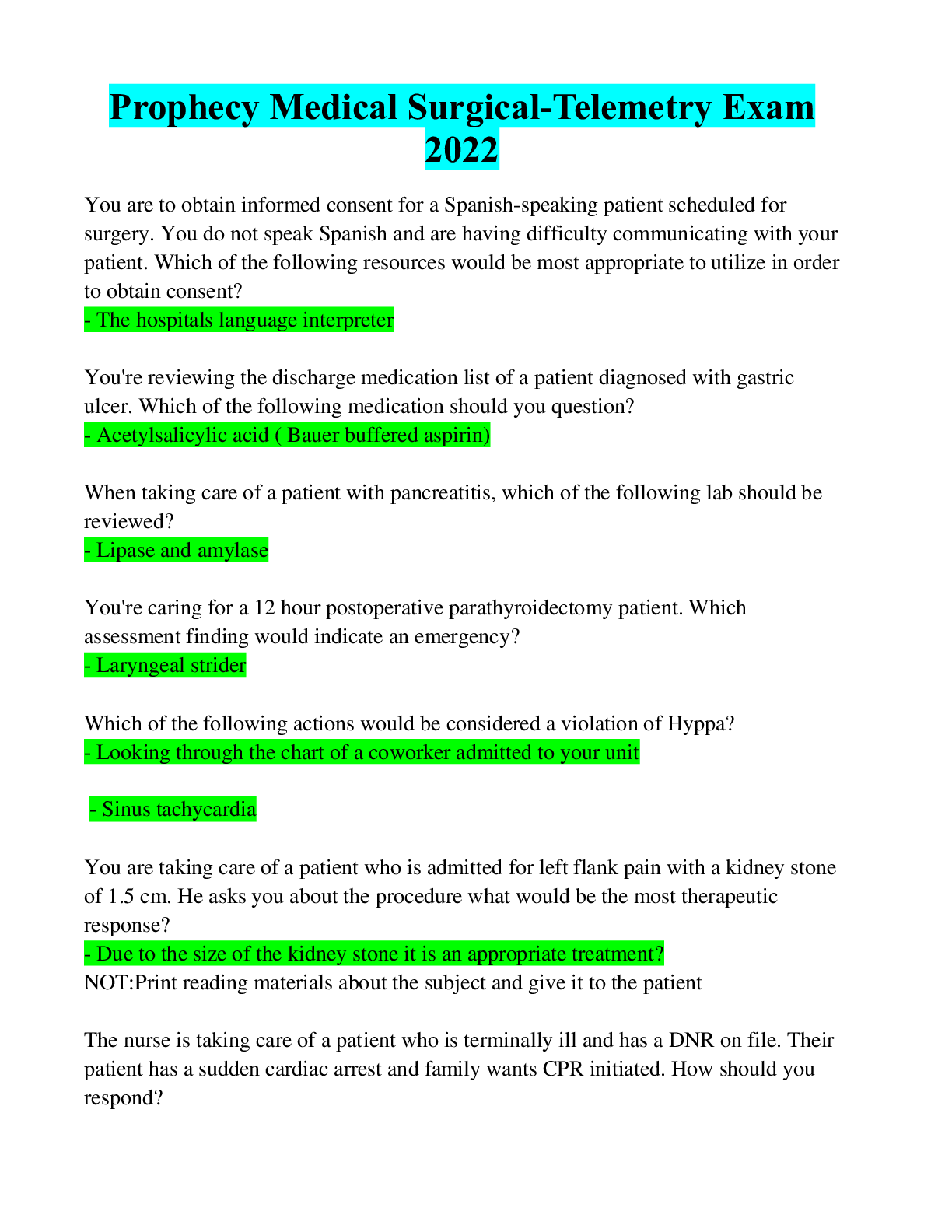
.png)
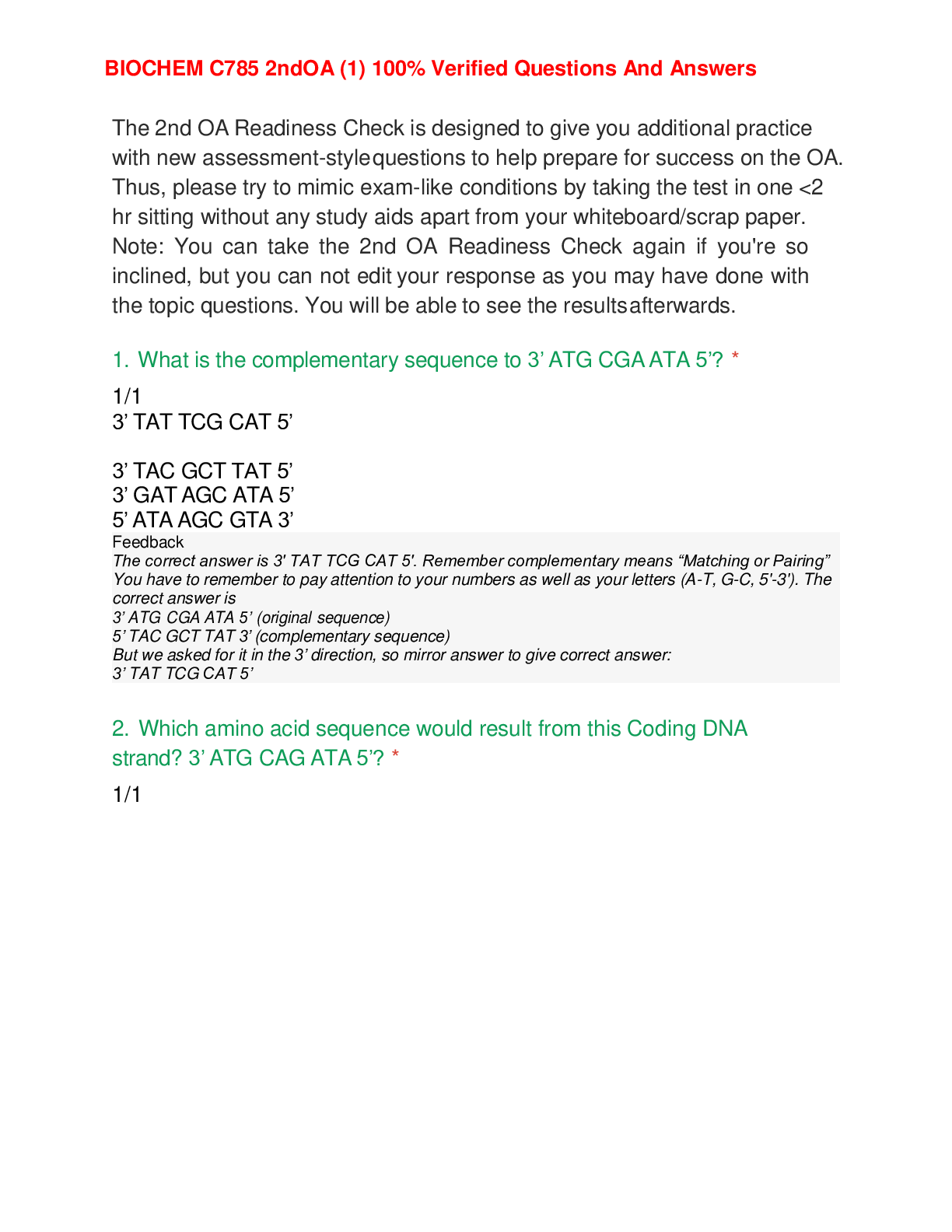
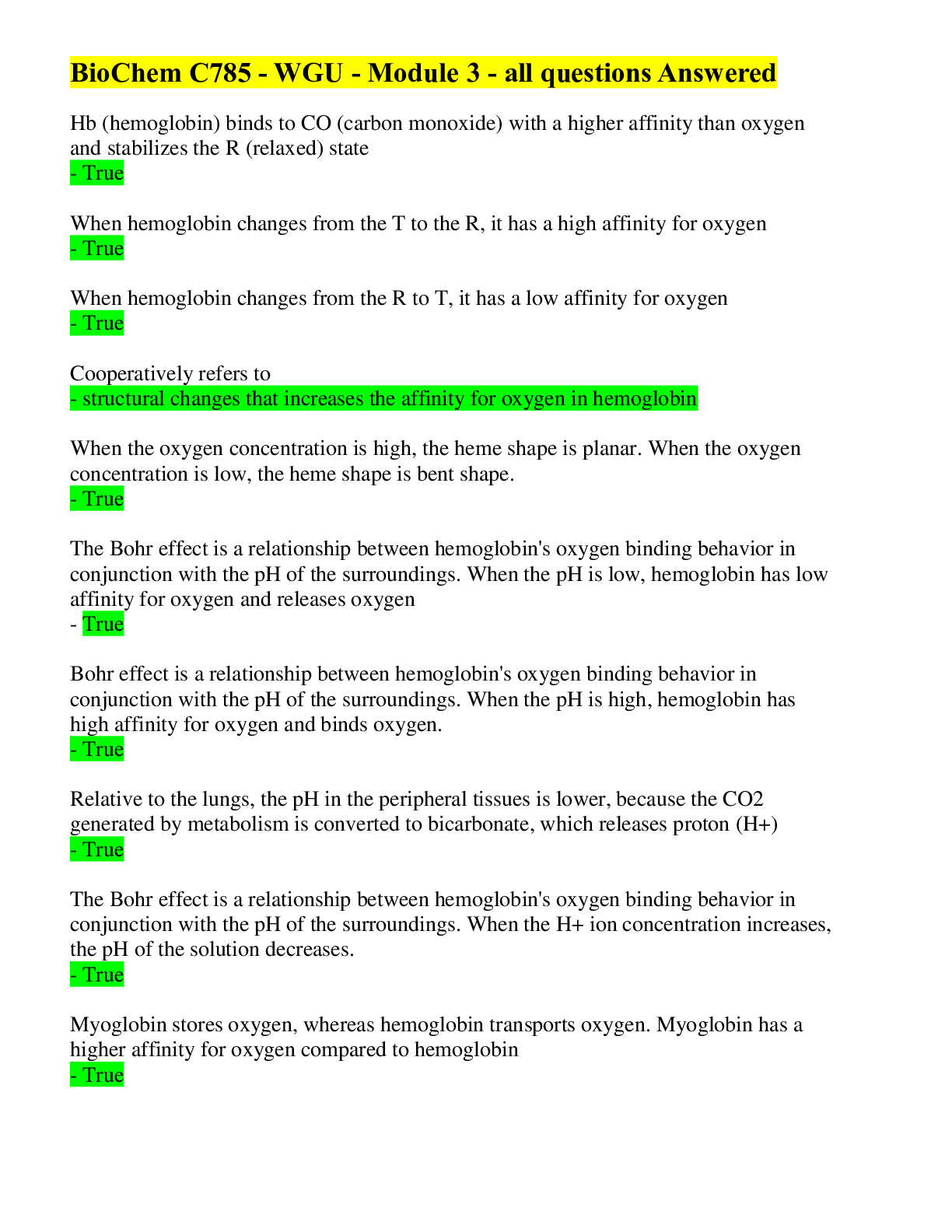
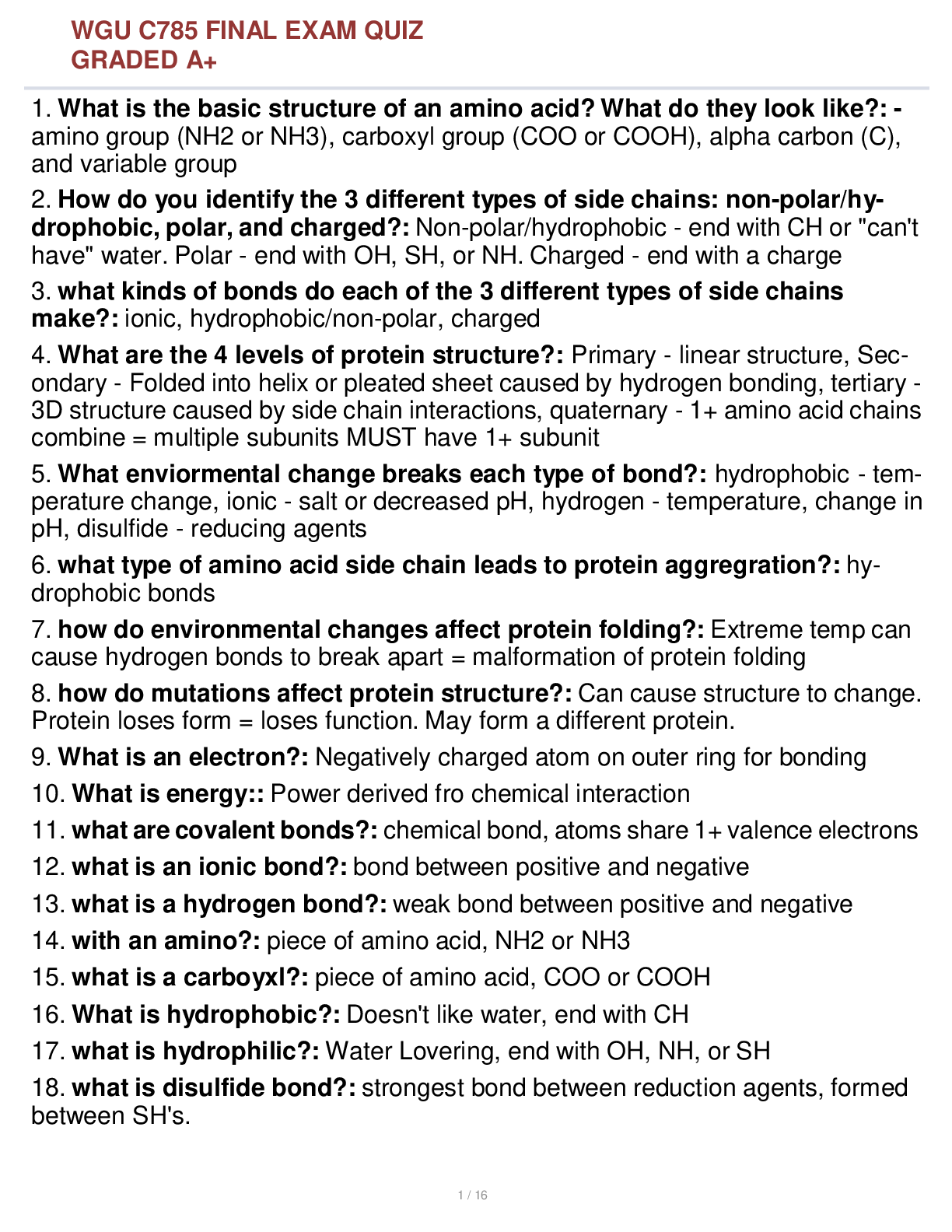
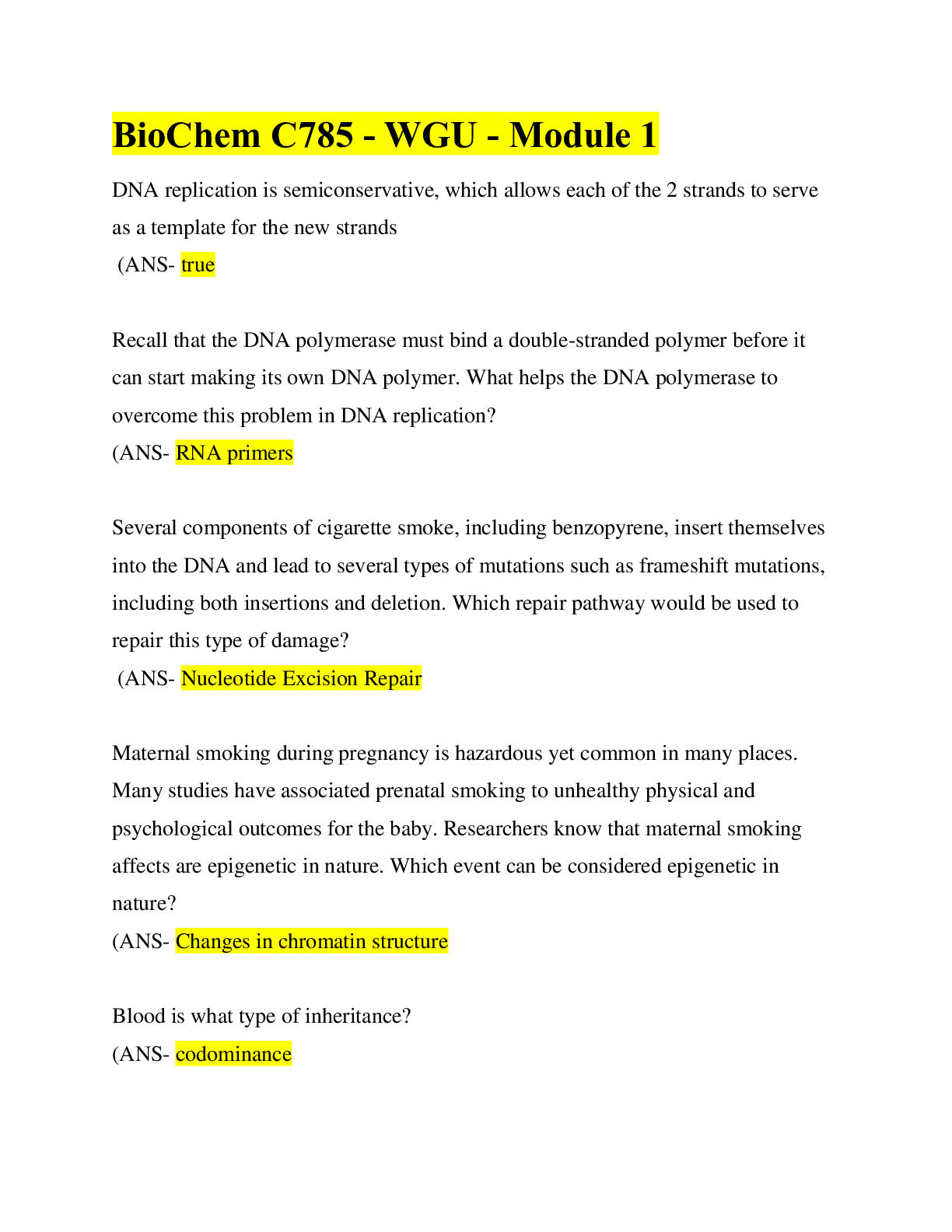
.png)


